SSZTC58 september 2015 CSD18540Q5B , DRV8701
“Magic smoke” is an informal term for the caustic smoke produced by overheated electronic circuits and components. These words have been spoken by almost every electrical engineer, often when they forgot to adjust the power-supply voltage level or accidentally shorted the voltage rail to a logic pin.
The technical reason for this event is electrical overstress (EOS); while human error is a common source, there are other, more subtle possible causes. EOS is often behind some of the most common questions posted to the TI E2E™ Community Motor Drive forum, including those that begin with: “My motor driver has stopped working correctly,” “My motor driver is damaged,” and “My motor is no longer spinning.” I will outline what EOS is and list a few common sources of EOS in motor-drive systems. In my next post, I will discuss several methods to help you prevent EOS in motor-drive systems.
EOS is thermal damage that occurs when an electronic device is subjected to a current or voltage beyond that device’s specified limits. Thermal damage typically results from excessive heat generated during the EOS event (high current across a resistance). The high temperature causes damage to the materials used to construct the integrated circuit, resulting in destruction or a permanent change in its operation.
Now that you know what EOS is, how do you know what the specified limits are? For this, you must examine the Absolute Maximum Ratings table in the data sheet of the electronic device (see Figure 1, which is from the DRV8701 data sheet). The absolute maximum ratings are the specifications beyond which permanent damage can occur. Absolute maximum ratings differ from the recommended operating conditions in a data sheet; if you go outside those specifications, the device may continue to function, just at specifications outside of the datasheet limits. An example of a violation for Figure 1 would be if the VM power-supply pin reached 50 V due to a transient event on the power rail.
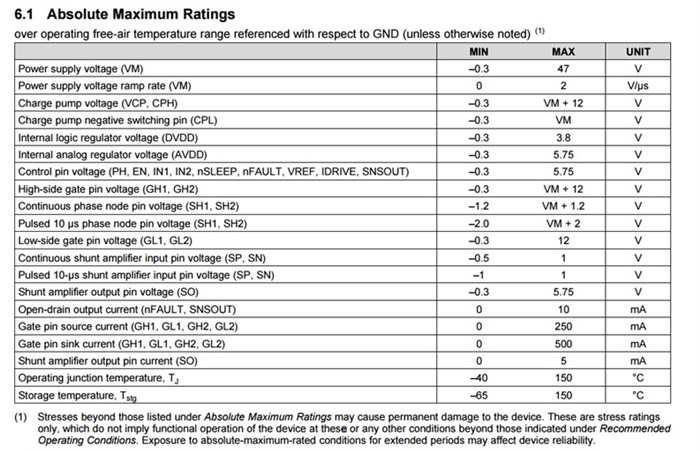 Figure 1 Absolute Maximum Ratings table
for the DRV8701
Figure 1 Absolute Maximum Ratings table
for the DRV8701So what are some common sources of EOS in motor-drive systems?
Supply Overvoltage
One of the most common sources of EOS is an overvoltage event on the device’s power-supply input. Supply overvoltage can be caused by motor regeneration (as outlined in an earlier post, example in Figure 2) or an external event to the system such as a component failure. Understanding where an overvoltage event originated from requires monitoring the system-supply rail under all possible internal and external operating conditions.
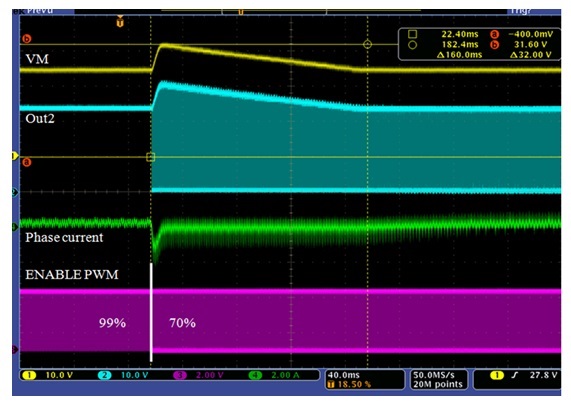 Figure 2 Supply overvoltage
transient
Figure 2 Supply overvoltage
transientSwitching Transients
Another common source of EOS in motor-drive systems is exposure to voltage transients related to the switching of the power MOSFETs. In an ideal half-bridge switching system, the voltage would alternate between ground and the voltage supply (Figure 3). In the real world, however, parasitics in the power MOSFETs and printed circuit board (PCB) layout can cause voltage transients to go below ground or above the voltage supply (Figure 4).
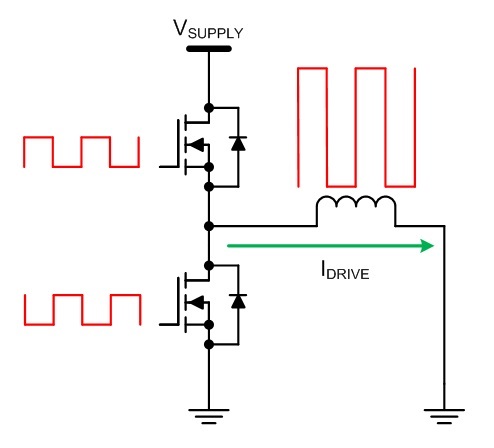 Figure 3 Ideal half-bridge
driver
Figure 3 Ideal half-bridge
driver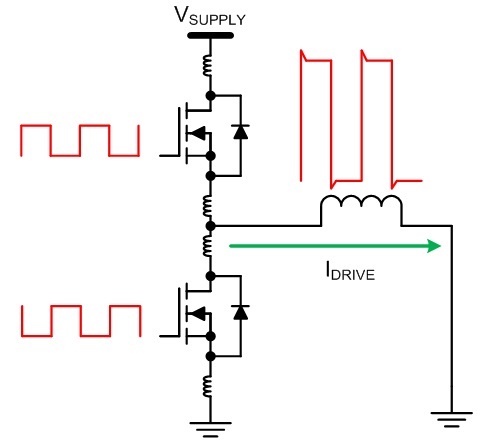 Figure 4 Half-bridge driver with
parasitics
Figure 4 Half-bridge driver with
parasiticsMOSFET Overcurrent
The last EOS event I’ll mention is related to overcurrent of the power MOSFET. TI’s integrated motor drivers incorporate both overcurrent and overtemperature protection features to prevent EOS from overcurrent conditions. I discussed these in detail in a previous post, but for systems using a gate driver with external power MOSFETs, you must take care not to violate the MOSFET safe operating areas. A power MOSFET data sheet will often incorporate a safe operating area (SOA) curve (shown in Figure 5). Excessive current in the power MOSFET will eventually lead to thermal damage of the device or its package.
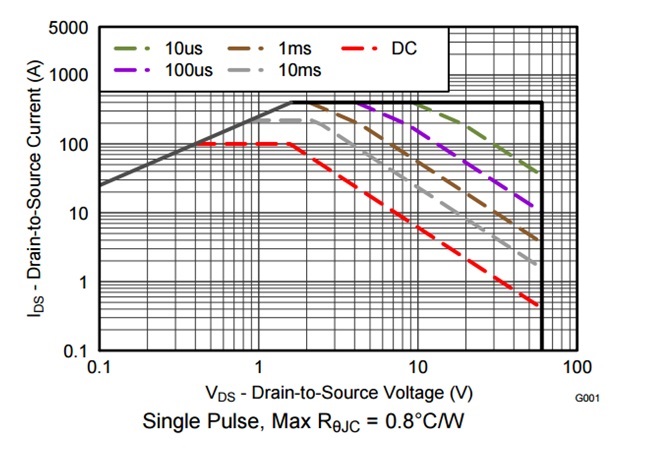 Figure 5 CSD18540Q5B maximum safe
operating area
Figure 5 CSD18540Q5B maximum safe
operating areaIn my next post, I will discuss some common solutions to prevent EOS in motor-drive systems. These range from external protection components to simple design considerations. If you would like for me to address something specific about EOS, post a comment below or ask a question in the TI E2E Community Motor Driver forum.
Additional Resources
- Read other blogs in this series on the most frequently asked questions from the Motor Driver forum.
- Looking for additional advice to prevent EOS? Find tips in this Engineer It video.